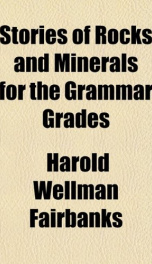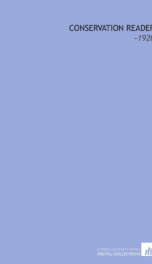stories of rocks and minerals for the grammar grades

Purchase of this book includes free trial access to www.million-books.com where you can read more than a million books for free. This is an OCR edition with typos. Excerpt from book: HORNBLENDE AND AUGITE. I want to tell you now about two other minerals that are very abundant in many rocks. They look much alike, but you will not often find them occurring together in the same rock. In many granites there is another dark mineral beside the mica. It varies in color from greenish to black and has smooth cleavage faces from which the light is reflected. If you attempt to scratch the mineral with a knife it does not appear to be as hard as feldspar. The color of the scratch or streak which the blade makes is greenish. If you will examine your piece of granite carefully you will discover that this dark mineral has two sets of cleavage faces. These make an angle with each other of 124 degrees. That is, an angle equal to one right angle and nearly half of another. Hold the specimen up and turn it slowly, and as the light is reflected from the different faces you can see the angle at which they meet. Sometimes hornblende takes the place of all the mica in granite. Then we call the rock hornblende granite. You remember that common granite contains quartz, feldspar, and mica. Sometimes you will find a rock that has the general appearance of granite, but contains only hornblende and feldspar. Such a rockwe call syenite. This rock, which has been known for a long time, is named after Syene, a place in ancient Egypt where it was quarried. The mineral which you are most likely to get confused with hornblende is called augite. These two minerals are very much alike in color and hardness. Augite, like hornblende, has smooth cleavage faces, but they meet at an angle of ninety degrees ; that is, a right angle. This latter fact will help you to distinguish them. Hornblende crystals differ from those of augite in being usually more slender, and in having four or six ...
Info about the book
Author:
Series:
Unknown
ISBN:
1110219113
Rating:
5/5 (5)Your rating:
0/5
Languge:
English
Users who have this book
Users who want this book
What readers are saying
What do you think? Write your own comment on this book!
write a commentif you like stories of rocks and minerals for the grammar grades try:
Other books by this author
Do you want to read a book that interests you? It’s EASY!
Create an account and send a request for reading to other users on the Webpage of the book!



